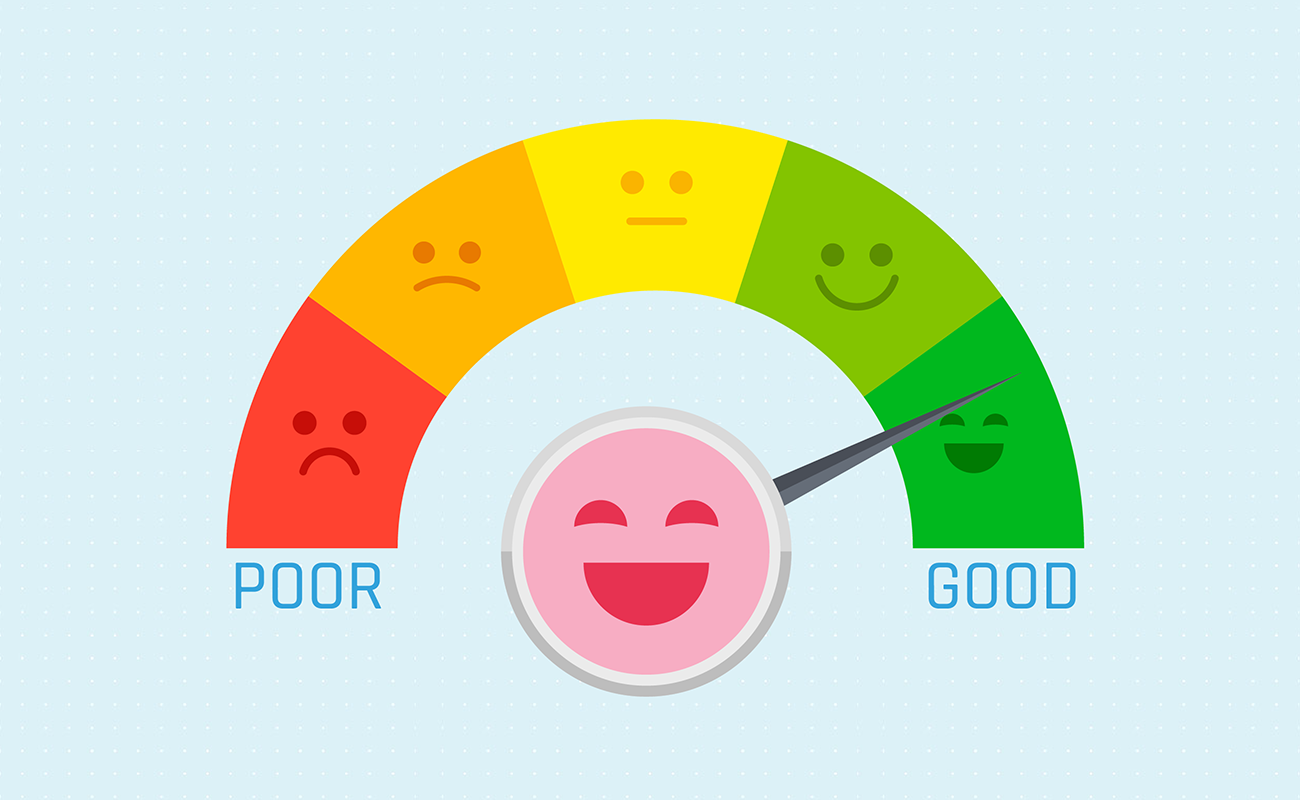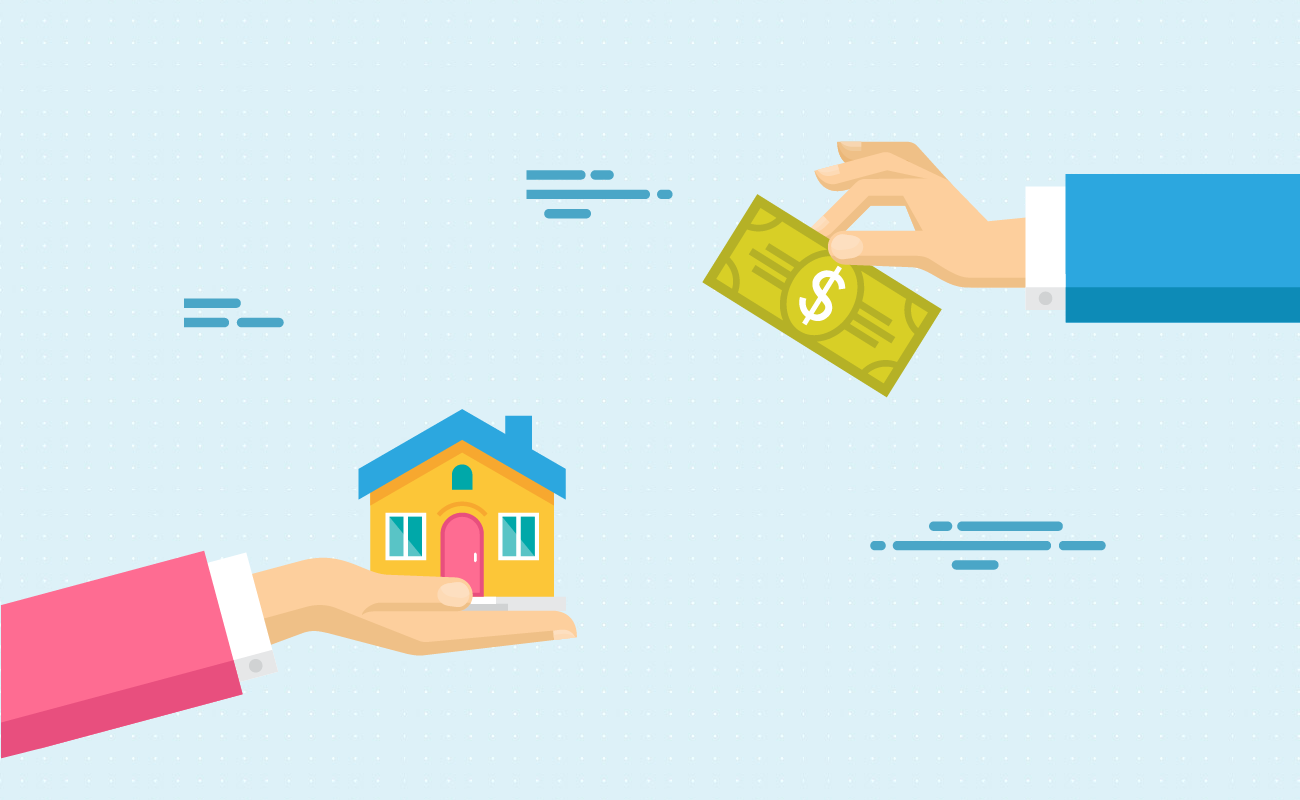Fixed Rates
30 yr
25 yr
20 yr
15 yr
10 yr
Compare Terms
Compare Rates
Real APR
Adjustable Rates
Qualification
Affordability
Renter Affordability
Rent vs Buy
Price per Square Foot
Jumbo
Home Sellers
 Jumbo Mortgage Payment Calculator
Jumbo Mortgage Payment CalculatorThis calculator helps home buyers explore what their initial monthly loan payments will be on an ARM loan and how those payments may change over time as market conditions change. While most conforming home loans are structured as fixed-rate loans, adjustable-rate loans are more common for jumbo mortgages.
The tabs below allow you to select between ARM or fixed loan options. Both calculators allow you to either focus exclusively on the monthly principal & interest payments; or include other ownership costs like HOA fees, property taxes, maintenance and insurance.
Guide published by Jose Abuyuan on October 7, 2020

The road to home ownership entails financial commitment and responsibility. Homebuyers must build a good credit history to qualify for a favorable mortgage deal. You must also save enough cash for down payment. Apart from this, it’s crucial to obtain the lowest rate to maximize your interest savings.
But depending on your home’s location, you might require a larger loan amount to finance your mortgage. Houses in major cities and coastal areas usually have really expensive price tags. And sometimes, a traditional conventional loan might not be enough to finance the home you need. When this happens, you can take advantage of jumbo mortgages.
Our guide will discuss what jumbo mortgages are and how they differ from conforming conventional loans. We’ll cover specific qualifications to obtain a jumbo mortgage, such the required credit score, down payment, and debt-to-income ratio. We’ll also talk about how jumbo mortgage markets are affected during economic boosts and downturns compared to conforming conventional loans.
A jumbo mortgage, also known as a non-conforming conventional loan, is a mortgage that surpasses conforming loan limits set by the Federal Housing Finance Agency (FHFA). It’s a type of conventional loan that’s specially made to back expensive properties in high-cost areas. Jumbo mortgages are commonly used by high-income consumers with exceptional credit scores and stable sources of funds.
The term “jumbo” pertains to the large size of the loan. This should not be confused for the large size of the house. Though larger houses tend to be more costly, there are average-sized homes that come with expensive price tags. These are usually properties located in coastal areas and major cities, which are designated high-cost locations.
For instance, let’s say the conforming limit in your county for a single-family home is $548,250. Loans that fall within this conforming limit are aptly called conforming conventional mortgages. In high-cost areas the limit is 50% higher than the baseline conforming limit. If you took a mortgage worth $900,000, it is classified as a jumbo mortgage.
Unlike common conforming mortgages, jumbo loans are not secured by government-sponsored enterprises (GSE). GSE’s Fannie Mae and Freddie Mac adhere to conforming limits established by the FHFA. They purchase loans and package them into mortgage-backed securities which are sold to secondary real estate markets. This helps keep the national mortgage industry liquid. As a rule, if a loan is much higher than the established limit, it cannot be bought, securitized, or guaranteed by GSEs.
You can obtain jumbo mortgages from private lending institutions such as banks, credit unions, and mortgage companies. Since they offer larger financing and receive no federal backing, these lenders have stricter qualifying standards. To secure a jumbo loan, expect stringent credit checks and tax reviews. The approval process also takes longer than regular conforming conventional loans.
Conforming loan limits must be adjusted annually to adequately reflect shifts in the average home price. This law was specifically enacted under the 2008 Housing Economic Recovery Act (HERA). Conforming loan limits also differ per county or state. Prices for houses that fall in the U.S. continental baseline are lower compared designated high-cost areas. Other locations outside the U.S. continental baseline also have high conforming loan limits. These U.S. territories include the following:
As of 2020, the conforming loan limit for single-unit housing in the U.S. continental baseline is $548,250. For designated high-cost areas, the conforming limit is 50 percent higher than the baseline limit. This is $765,600 for a single-unit house. For a complete list of maximum conforming loan limits in 2020, refer to the table below.
| Location | 1-unit home | 2-unit home | 3-unit home | 4-unit home |
|---|---|---|---|---|
| Continental U.S. Baseline | $548,250 | $702,000 | $848,500 | $1,054,500 |
| Designiated High-cost Areas | $822,375 | $1,053,000 | $1,272,750 | $1,581,750 |
| Alaska, Hawaii, Guam & U.S. Virgin Islands | $822,375 | $1,053,000 | $1,272,750 | $1,581,750 |
For the U.S. continental baseline, conforming limits apply to houses in the following locations:
Arkansas, Alabama, Arizona,Delaware, Georgia,Illinois, Indiana, Iowa, Kentucky, Louisiana, Maine, Michigan, Minnesota, Mississippi, Missouri, Montana, Nevada, New Mexico, North Dakota, Ohio, Oklahoma, Rhode Island, South Carolina, South Dakota, Texas, Vermont, Wisconsin, and most other areas in the continental United States.
Designated high-cost areas are houses located in busy metropolitan areas and coastal states. Places such as Alaska, Guam, Hawaii, and the U.S. Virgin Islands also follow high-cost conforming limits.

Average rates for jumbo mortgages are generally higher than conforming loans. During a thriving economic climate, though more consumers purchase conforming loans, a significant number of borrowers seek out jumbo mortgages. When market conditions are highly favorable, jumbo lenders may offer rates that compete with conventional conforming loans. However, during a recession, few borrowers seek jumbo mortgages, which drives their rates higher.
Unfavorable economic conditions, such as the 2020 economic crisis caused by COVID-19, shrinks the jumbo mortgage market. Demand for jumbo mortgages dry up as investors turn to more secure mortgage bonds for government-backed loans. This assures investors they will obtain payments even if a huge number of borrowers are in forbearance or deferment.
As for jumbo loan rates, in July 2020, CNBC reported that the average rate for a 30-year fixed jumbo mortgage was 3.52 percent. In contrast, conforming conventional loans had an average rate of 3.26 percent. In this regard, conforming conventional loan markets were still more competitive than jumbo loans even during an economic crisis.
Despite borrowers seeking forbearance in Q1 of 2020, the Urban Institute reported that 30-year fixed-rate loans comprised 74.4 percent of new loan originations in June 2020. Moreover, as mortgage rates dropped to historic lows, more conforming loan borrowers continued to refinance their mortgages. Fannie Mae and Freddie Mac reported conforming loan refinances increased between the 71 to 75 percent range.
When economic times are tough, it’s harder to secure conforming conventional loans. The approval process also takes longer. For instance, in April 2020, banks such as JPMorgan Chase temporarily changed its underwriting guidelines for conforming loans. They raised the required a credit score of 700, with a mandatory down payment of at least 20 percent. Unless you qualify for a government-backed mortgage, such as a USDA loan with lenient credit standards, it’s tough to get mortgage approval during the COVID-19 crisis.
Furthermore, as jumbo lenders try to mitigate risk, they employ measures to protect them from further losses. In April 2020, Wells Fargo, the largest lender of jumbo mortgages in 2019, drastically limited their jumbo loan program due to the COVID-19 pandemic. Wells Fargo stated they will only refinance jumbo mortgages for clients who have at least $250,000 in liquid assets with the bank for 30 days prior to application. The higher requirement enabled the bank to retain more of its funds.
Eventually, Wells Fargo loosened restrictions for existing clients. In July 2020, CNBC reported that current customers can refinance jumbo mortgages as long as they have an existing loan with the bank and no other deposit accounts. This means if you hold assets with the bank, whatever the amount, you are eligible for refinancing. However, new clients must transfer $1 million to the bank to apply for refinancing.
On the other hand, for conforming conventional loans, the Federal Reserve continues to encourage consumers to buy houses and refinance their mortgage during an economic crisis. In a September 2020 Washington Post interview with Brian Koss, executive vice president of Mortgage Network, he stated:
“The biggest driver behind low mortgage rates is the Fed, as 30-year fixed rates have fallen about three-quarters of a percent since the Fed began buying up mortgage-backed securities in March.”
-Brian Koss
The Federal Reserve’s policies keep rates low, which enables the conventional conforming loan market to remain liquid. While sales experienced drops in early 2020, the Washington Post notes that purchases, especially refinances, continued to outpace the previous year. The low rates should help encourage more borrowers to take new conforming mortgages and refinances.
Since jumbo mortgages are also a type of conventional loan, they have many similarities with conforming conventional loans. However, their differences cannot be more apparent. Let’s examine their similarities and differences below.
Jumbo: First, jumbo mortgages cost a lot more than conforming loans. This is specifically suited for high-income consumers looking to buy expensive property. Average closing costs for homes usually range between 2 percent to 5 percent of a home’s purchase price. For instance, if your house is worth $850,000, your closing costs can be anywhere between $17,000 to $42,500. That’s a huge sum for the average consumer.
Conforming: Meanwhile, conforming mortgages follow a loan limit. This means it won’t cost as much as a jumbo loan. Everything from your monthly payments to your closing costs will be more affordable with a conforming loan than a jumbo mortgage. For instance, let’s say your home is worth $350,000. Since the average closing cost is between 2 percent to 5 percent, you’ll spend around $7,000 to $17,500. This price range is more realistic for the average homebuyer.

Jumbo: Jumbo loans require more stringent credit qualifications. To be eligible, your credit score must be 700 and above. Some lenders may even require a credit score of at least 720. Borrowers who obtain the most favorable jumbo loan rates have credit scores between 800 to 850.
Conforming: On the other hand, you can qualify for a conforming conventional loan with a credit score of 680. Likewise, if you want to secure the best rates, your credit score must be higher, at 700 and above. Some lenders may approve borrowers with a credit score of 600, but they usually get higher rates.
Jumbo: Since lenders take greater risk offering jumbo loans, interest rates are typically higher than conforming conventional loans. But again, if market conditions are positive, lenders may offer competitive rates to match conforming loans. To reduce your rate, you can make a higher down payment.
As of October 6, 2020, below are average jumbo mortgage rates for fixed and adjustable-rate loans:
| Jumbo Loan | Interest Rate | APR |
|---|---|---|
| 30-Year Fixed | 3.11% | 3.2% |
| 15-Year Fixed | 2.58% | 2.64% |
| 7/1 ARM | 3.12% | 3.74% |
| 5/1 ARM | 2.98% | 3.90% |
Conforming: Expect conforming conventional rates to be lower than jumbo mortgages. To qualify for the most favorable rates, work on having a higher credit score. Likewise, you can lower your rate by making a higher down payment on your loan.
The table below shows average conforming conventional rates for fixed and adjustable-rate mortgages as of October 6, 2020:
| Conforming Loan | Interest Rate | APR |
|---|---|---|
| 30-Year Fixed | 3.05% | 3.36% |
| 15-Year Fixed | 2.56% | 2.87% |
| 7/1 ARM | 3.130% | 3.13% |
| 5/1 ARM | 3.090% | 4.040% |
Lenders check your debt-to-income ratio (DTI) to evaluate your capability to repay. DTI is a percentage that measures the amount of all your debts compared to your gross monthly income. A lower DTI ratio indicates a borrower has lower risk of defaulting on their loan.
There are two types of DTI ratio:
Depending on the lender, others allow up to 43 percent back-end DTI ratio for conforming loans. Lenders may even approve up to 50 percent back-end DTI if you have compensating factors such as a student loan. As for jumbo mortgages, a lender may allow a higher back-end DTI if you make a larger down payment.

Jumbo: Down payment requirements depend on the lender and general market conditions. Most jumbo loan lenders require 20 percent down payment upon closing. If market conditions are positive, some lenders allow a down payment as low as 10 percent. But to offset the low payment, this usually comes with higher interest. Some may require a minimum down of 30 percent. Make sure to prepare enough founds to cover this large sum.
Conforming: While financial experts recommend making 20 percent down, most homebuyers pay an average of 10 percent to secure a conforming loan. Paying 20 percent down removes private mortgage insurance (PMI) which is an added cost that protects lenders in case your default on your loan.
To summarize the difference and similarities between jumbo mortgages and conforming conventional loans, we created the table below:
| Requirements | Jumbo Mortgages | Conforming Conventional Loans |
|---|---|---|
| Conforming loan limit | Exceeds federal conforming limits assigned by FHFA | Follows the federal conforming limits assigned by FHFA |
| Credit score | Typically approves 700 Some lenders require 720 | Typically approves 680 700 is ideal |
| Rates | Rates are generally higher compared to conforming loans Low credit score means a higher rate A higher down payment decreases the rate | Low credit score means a higher rate A low down payment increases the rate A higher down payment decreases the rate |
| Front-end DTI | Must not exceed 28% | Must not exceed 28% |
| Back-end DTI | Ideally 36% Should not exceed 43% If you make a large payment, some lenders allow a higher DTI | Ideally 36% Should not exceed 43% Up to 50% if you have a student loan |
| Down payment | Most lenders require 20% down payment With 20% down, PMI is not required Depending on market conditions, others may require 30% | 10% – average down payment 20% – removes PMI requirement 3% – minimum requirement for a 97-3 loan |
| Cost | Usually does not require PMI due to the high down payment Average closing cost is 2%-5% of the home’s purchase price, more expensive than conforming loans | PMI is 0.5%-1% of the loan amount annually PMI is canceled when mortgage balance reaches 78% Average closing cost is 2%-5% of the home’s purchase price, more affordable than jumbo loans |

High-income borrowers who take jumbo mortgages often have complex sources of income. To assess their financial stability, lenders impose more thorough evaluation and documentation. Expect the underwriting process to be stricter and more detailed than conforming conventional loans. Underwriters will carefully examine your bank statements, credit report, and assets. They will also need multiple years of income tax returns as proof of your income. If you are self-employed, your lender will pay closer attention to your tax records.
Borrowers must also be prepared to show cash reserves, which is another basis for your ability to repay the loan. Lending institutions may require at least 18 months of cash reserves to approve a jumbo mortgage. Besides cash reserves, borrowers can also use up to 70 percent of their retirement savings. Lenders may also consider large cash gifts given by a company. Just take note that it must include a signed letter proving that the money is not a debt that should be paid.
Gather the following documents for your jumbo loan application:
Borrowers can obtain jumbo mortgages in different terms, which typically come in 30-year and 15-year loans. These may also be purchased as 10 and 20-year terms. Take note that shorter loan terms come with lower interest rates but with higher monthly payments.
Jumbo loans are available in fixed-rate and adjustable-rate mortgages (ARM). Most conforming conventional loans are structured as fixed-rate loans. However, jumbo mortgage borrowers often select ARMs, which have low introductory rates. After the introductory period, ARM rates change depending on market conditions and the performance of a referenced index rate. Common indexes include:

When interest rates rise it is better to have your loan indexed against a lagging index like COFI. When rates are falling leading indexes like CMT are more advantageous to the borrower.
For example, if you take a 3/1 ARM, your rate remains the same for the first three years. Once this introductory period is through, your rate will reset annually for the succeeding years. This means rates can either increase or decrease, which results in higher or lower monthly payments. ARMs also have an interest rate cap, which limits how high your rate can increase. This is usually 5 percentage points higher than the initial rate, though other lenders may impose a higher cap.
Choosing an ARM is advantageous when rates are low. However, this can work against you if rates continue to increase. For this reason, you must have ample funds to cover the risk of increasing payments. Do not take an ARM jumbo loan if you’re unsure about your finances.
ARMs come in different terms, such as 3/1, 5/1, 7/1 and 10/1 ARM. Adjustable-rate mortgages comprise at least a single digit percentage of the U.S. housing market.
To lock in a low rate, many borrowers with ARMs eventually refinance into a fixed-rate loan. Fixed-rate mortgages guarantee that your principal and interest payments remain the same throughout the entire payment duration.

To understand the difference between a fixed-rate loan and an ARM, let’s take an example. Suppose the home you’re buying is priced at $2,000,000. You make a 20 percent down payment of $400,000 to bypass PMI. Using the calculator above, let’s estimate mortgage payments for a jumbo fixed-rate loan and a jumbo ARM.
| Jumbo ARM | Amount |
| Beginning monthly principal & interest payment | $7,546.69 |
| Maximum monthly principal & interest payment | $10,627.31 |
| Total closing cost | $33,300.00 |
| Total interest | $1,896,288.90 |
When you take a jumbo ARM, you must anticipate rate increases to factor in higher payments. It’s important to know your interest rate cap so you can estimate how high your payments can get if rates keep increasing. For this example, your rate cap is set at 8 percent.
For the first 5 years of your loan, your monthly principal and interest payment (P&I) will be $7,546.69. After the introductory period, your rate may adjust to a lower or higher figure in subsequent years. Based on this example, your maximum P&I payment will be $10,627.31. This means you must have extra $3,080.62 per month to cover possible payment increases. Moreover, since rates can increase, your total interest cost can be up to $1,896,288.90 with a jumbo ARM.
| Fixed-rate ARM | Amount |
|---|---|
| Monthly principal & interest payment | $6,919.47 |
| Total closing cost | $33,300.00 |
| Total interest | $891,009.14 |
On the other hand, if you take a fixed-rate jumbo loan, your interest rate is locked for 30 years. Even if market rates increase, your rate remains the same. You don’t have to worry about increasing P&I payments, keeping it within an affordable range. Choosing a fixed-rate mortgage also makes your budget easier to calculate.
In the example above, your monthly P&I payment will be $6,919.47 for 30 years. Because you’re following a traditional amortization schedule with fixed monthly payments, it’s easier to predict the precise interest cost. In this example, if you take the 30-year fixed jumbo loan, your overall interest cost will be $891,009.14.
This shows taking a fixed-rate loan is the safest way to guarantee you can afford monthly payments. You can also anticipate your total interest cost with a traditional amortizing loan. Meanwhile, if you take an adjustable-rate mortgage, you must have enough funds prepared for higher payments. However, if rates decrease, you have the advantage of making low monthly payments, which also yields considerable savings. If you want to lock in a lower rate, you can refinance your jumbo ARM into a fixed-rate loan.
Now and then, homebuyers need a large loan to purchase an expensive home. High-income consumers can secure jumbo mortgages to buy property in expensive neighborhoods such as coastal states, major cities, and other high-cost U.S. territories.
Unlike conforming conventional loans, jumbo mortgages require higher payments. Since jumbo loans are not secured by the government-sponsored enterprises, lenders are susceptible to greater loss if borrowers default on their loan. For this reason, jumbo loan lenders impose stricter qualifying standards. Expect underwriters to thoroughly scrutinize your credit history, bank accounts, taxes, and the rest of your financial background.
During a financial crisis, few lenders are willing to offer jumbo mortgages. If you do find one, it will be harder to obtain approval. It's ideal to take jumbo loans during favorable economic conditions.
If you want to secure a jumbo loan, make sure to increase your credit rating. Lending institutions usually approve the most credit-worthy borrowers with credit scores well above 700. You must also prepare enough down payment, at least 20 percent of the home’s price, to secure this type of loan.
Need to compare a fixed-rate loan with an adjustable-rate mortgage? Check out our fixed vs. ARM mortgage calculator.
Jose Abuyuan is a web content writer, fictionist, and digital artist hailing from Las Piñas City. He is a graduate of Communication and Media Studies at San Beda College Alabang, who took his internship in the weekly news magazine the Philippines Graphic. He has authored works professionally for over a decade.